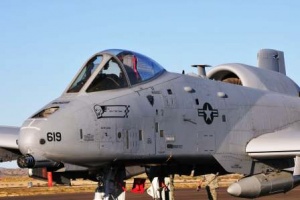 A-10 Warthog scheduled to be eliminated under DoD plan.
Clinton, KY. (2-25-2014) In order to gain control of a two war structure Pentagon, Secretary of Defense Chuck Hagel released a budget report on reducing the United States armed forces to pre World War II levels.
The current military budget is based upon the concept that US forces can fight a two war situation anywhere in the world at the same time. This has resulted in a Post 9/11 military force cost of about $500 billion each year.
Hagel listed several important concept changes that will be in the President’s federal budget due to be released on March 4, 2014. The items for congressional review and consent are:
Army
(1). Shrink the U.S. Army to pre-World War Two levels.
A reduction to 450,000 would be the Army's smallest size since 1940 - before the United States entered World War Two - when it had troop strength of 267,767, according to Army figures. The Army's previous post-World War Two low was 479,426 in 1999.
Pentagon plans to reduce the size of the Army to between 440,000 and 450,000 soldiers. The Army is currently about 520,000 soldiers and had been planning to draw down to about 490,000 in the coming year
Air Force
(2) Eliminate the popular A-10 aircraft.
The Pentagon plans to eliminate the Air Force's fleet of A-10 "Warthog" close air support planes in order to ensure continued funding of the new long-range bomber, the Lockheed Martin F-35 Joint Strike Fighter and a new aerial refueling tanker. The A-10 has been the most favored “ In Theater” major worker for close in ground support. Problem is now that the A-10’s are no longer a strategic platform up against newer fighters and drones. They were designed to destroy Russian tanks in a land war in Eastern Europe in the 1980’s and 1990’s. Under this budget, commitments are made to ensure continued funding of the new long-range bomber, the Lockheed Martin F-35 Joint Strike Fighter and a new aerial refueling tanker.
Personnel Benefits
(3) Reduce military benefits in order to meet 2015 spending caps.
The Pentagon chief also announced a series of steps to try to reduce the Defense Department's military and civilian personnel costs, which now make up about half of its spending. Strategic move to push more health care and housing cost to servicemen and their families.
Hagel said the department would slow the growth of tax-free housing allowances, reduce the annual subsidy for military commissaries and reform the TRICARE health insurance program for military family members and retirees.
Navy
No plans to reduce the 11 Aircraft Carrier Groups now in the system. These will be needed to be the basic platforms for future Force Projection. However, a detailed look at new naval systems and weapons will be undertaken.
Ships that move troops quickly will be given more money over the World War II ships of the line design. This will impact the decision for the new 11 cruisers being planned. The defense secretary added that the Pentagon had decided to build only 32 versions of the new Littoral Combat Ship, rather than the 52 envisioned.
New Global Force Structure
Hagel spoke to the new strategic policy of moving United States military concern away from Europe and the Middle East to continue shifting its focus to the Asia-Pacific region. This shift in forward threat analysis will no longer need a land Army of the size currently maintained. The planned cut in the Army's size comes as the Defense Department is in the process of reducing projected spending by nearly a trillion dollars over a 10-year period.
This situation came about because the US, under President Bush, fought two wars at the same time in the Middle East. In 2006, the military budget went from around 250 billion a year to just under 500 billion a year.
"This will be the first budget to fully reflect the transition DoD (the Department of Defense) is making after 13 years of war, the longest conflict in our nation's history," Hagel said.
"We chose further reductions in troop strength and force structure in every military service - active and reserve - in order to sustain our readiness and technological superiority and to protect critical capabilities," he said.
End Game
Parts of the Hagel’s new understanding of how America must fight future wars are the cuts to be made to the National Guard.
This single issue will immediately involve all 50 states in a comprehensive Congressional battle over who has the most political power over the military budget, the President or the Congress.
This is a battle that has been brewing for over 14 years. It is the same battle America fought in 1900-1914 with the move to modernize and streamline Force America against a new century geopolitical landscape. |







